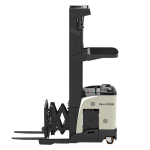A Conversation That Exposed the Hidden Bottleneck
Layla (Operations Director, Riyadh): “We invested in new forklifts and software, but somehow our warehouse still feels slow.”
Carlos (Automation Consultant): “That’s because your systems don’t talk to each other. Integration—not just equipment—drives throughput.”
David (Solutions Engineer, Akuros): “Exactly. When racking, transport, and software are aligned, every second counts. In our integrated warehouses, clients report 35% more pallet movement—without expanding their floor space.”
That short exchange captures today’s warehouse dilemma: isolated investments create local improvements but global inefficiencies. Integration, not addition, is the new multiplier.

One-Stop Warehouse Supplier
The Engineering Foundation of One-Stop Warehouse Systems
Intelligent Material Selection and Load Design
At Akuros, the backbone of every system begins with material science.
-
High-strength cold-rolled steel ensures consistent load-bearing performance up to 2,000 kg per pallet position.
-
Epoxy powder coating prevents corrosion and maintains visual clarity even in humid environments.
-
Anti-sway bracing en boltless joints enhance structural integrity and reduce vibration transfer during automated picking.
Compared with traditional modular warehouse structures, integrated racking engineered for system-wide compatibility offers 20–25% longer service life and 15% lower maintenance cost.
Precision Manufacturing & Modular Integration
Unlike generic racking systems, Akuros facilities operate under ISO 9001-certified precision fabrication lines.
Each component—beam, upright, or guide rail—is laser-cut to ±0.2 mm tolerance. This precision allows seamless integration with AGVs, AS/RS cranesen IoT-sensoren.
Automation Alignment:
-
RFID and barcode compatibility for inventory visibility.
-
Floor- and wire-guided turret truck systems for aisle accuracy under 2 cm deviation.
-
Modular bolt patterns allowing upgrades to semi- or fully-automated systems.
What Makes Akuros One-Stop Warehouse Integration Different
Beyond Racking—A Unified Ecosystem
Akuros doesn’t sell racks or forklifts. It builds ecosystems where equipment, software, and people operate as one synchronized network.
-
Design Integration: Space utilization up to 85% through VNA configurations.
-
Automation Integration: Compatibility with major automation brands (Daifuku, Dematic, Swisslog).
-
Control Integration: WMS + AI route optimization reduce idle travel by 30%.
-
Sustainability: LED zoning, solar-assisted conveyor belts, and recyclable rack coating systems cut energy use by 20%.
Comparison Table: Integrated vs. Fragmented Warehousing
| Functie | One-Stop Magazijn Integration | Conventional Setup |
|---|---|---|
| Throughput | +35% (optimized flow) | Baseline |
| Space Utilization | Up to 85% | 45–55% |
| Accident Rate | ↓30% (guided systems) | Medium risk |
| Energie-efficiëntie | -20% | Standard |
| ROI Period | 1.8 years | 3.2 years |
| System Scalability | Hoog | Beperkt |
Inzichten van experts & wetenschappelijke gegevens
“Integration is no longer optional—it’s the only path to resilience in logistics.”
- Dr. Helena Mertz, Logistics Engineering Institute, 2024.
Scientific Data Snapshot
-
McKinsey (2024): Integrated warehouse systems improve throughput by 28–35% on average.
-
Fraunhofer Institute (2023): Accident reduction of 30% in guided narrow-aisle environments.
-
PwC (2024): Integrated warehouses achieve 22% lower labor cost due to unified control systems.
-
MIT CTL Study (2023): Every $1 in integration returns $4.6 in lifetime efficiency gains.
Expert Summary
Integration redefines logistics not by adding assets but by connecting them intelligently. The most successful facilities treat their warehouse as a living digital organism—capable of learning, predicting, and optimizing flow dynamically.

One-Stop Magazijn
Case Studies & Real-World Applications
Case 1 — Saudi FMCG Warehouse Upgrade
Client transitioned from a conventional wide-aisle setup to an Akuros integrated VNA system with automated picking.
-
Result: +34% throughput, -18% power consumption.
-
Integration: AI-driven route mapping + LED zone picking.
Case 2 — Dubai E-Commerce Hub
A leading online retailer adopted Akuros’ full one-stop solution (racking + AGVs + WMS).
-
Outcome: 50% increase in SKU density, improved pick accuracy from 92% → 99.3%.
Case 3 — European Retail Distributor
Integrated IoT sensors into legacy pallet racks for real-time monitoring.
-
Result: Maintenance alerts reduced downtime by 40%, with ROI achieved within 16 months.
For more details, visit Akuros One-Stop Warehouse-oplossingen.
Customer Feedback
“We thought integration was expensive—until we saw how much inefficiency we’d been living with.”
- Logistics Director, Turkey.
“The day after Akuros finished the retrofit, our operators said: ‘The warehouse finally makes sense.’”
- Operations Supervisor, UAE.

Groot one-stop magazijn
FAQ
1. What is a One-stop magazijnoplossing?
It’s an integrated system combining racking, automation, safety, and software into one unified ecosystem managed by a single provider.
2. How does integration improve warehouse throughput?
By reducing friction between systems—racking, vehicles, and WMS communicate in real-time, cutting delays and idle time.
3. Is One-Stop Integration expensive?
Initial costs are moderate but deliver fast ROI (average 1.8 years). Savings come from energy efficiency, reduced labor, and higher density.
4. Can it retrofit existing warehouses?
Yes. Akuros specializes in modular retrofits for existing sites, maintaining live operations during installation.
5. How does this support sustainability goals?
Integrated systems minimize energy use, reduce forklift traffic, and optimize lighting and HVAC cycles—helping meet ESG compliance.
Referenties
-
McKinsey & Co. (2024). Supply Chain Optimization and Spatial Efficiency in Global Logistics.
-
Fraunhofer Institute. (2023). Warehouse Safety and Automation Study.
-
PwC Research. (2024). Smart Warehousing and Future Supply Chains Report.
-
MIT Center for Transportation & Logistics. (2023). Engineering Narrow Aisle Systems for Future-Ready Warehouses.
-
Journal of Global Logistics. (2024). Elena Rossi – Automation and Narrow Aisle Design in Modern Warehousing.
-
World Economic Forum. (2024). Global Logistics Infrastructure Development Report.
-
ISO. (2023). Warehouse Safety Standards ISO 15512 & ISO 28000.
-
Gartner. (2025). Automation and Robotics Trends in Global Warehousing.
-
Deloitte Insights. (2024). Rethinking Storage Systems for Efficiency and ESG Alignment.
-
Akuros Research Department. (2025). One-Stop Warehouse Integration Performance Data.
For Akuros, integration is not a luxury but a foundation. By merging hardware, software, and workflow design into one unified ecosystem, the company helps clients move from fragmented systems to cohesive intelligence—turning every meter of warehouse space into measurable productivity.








